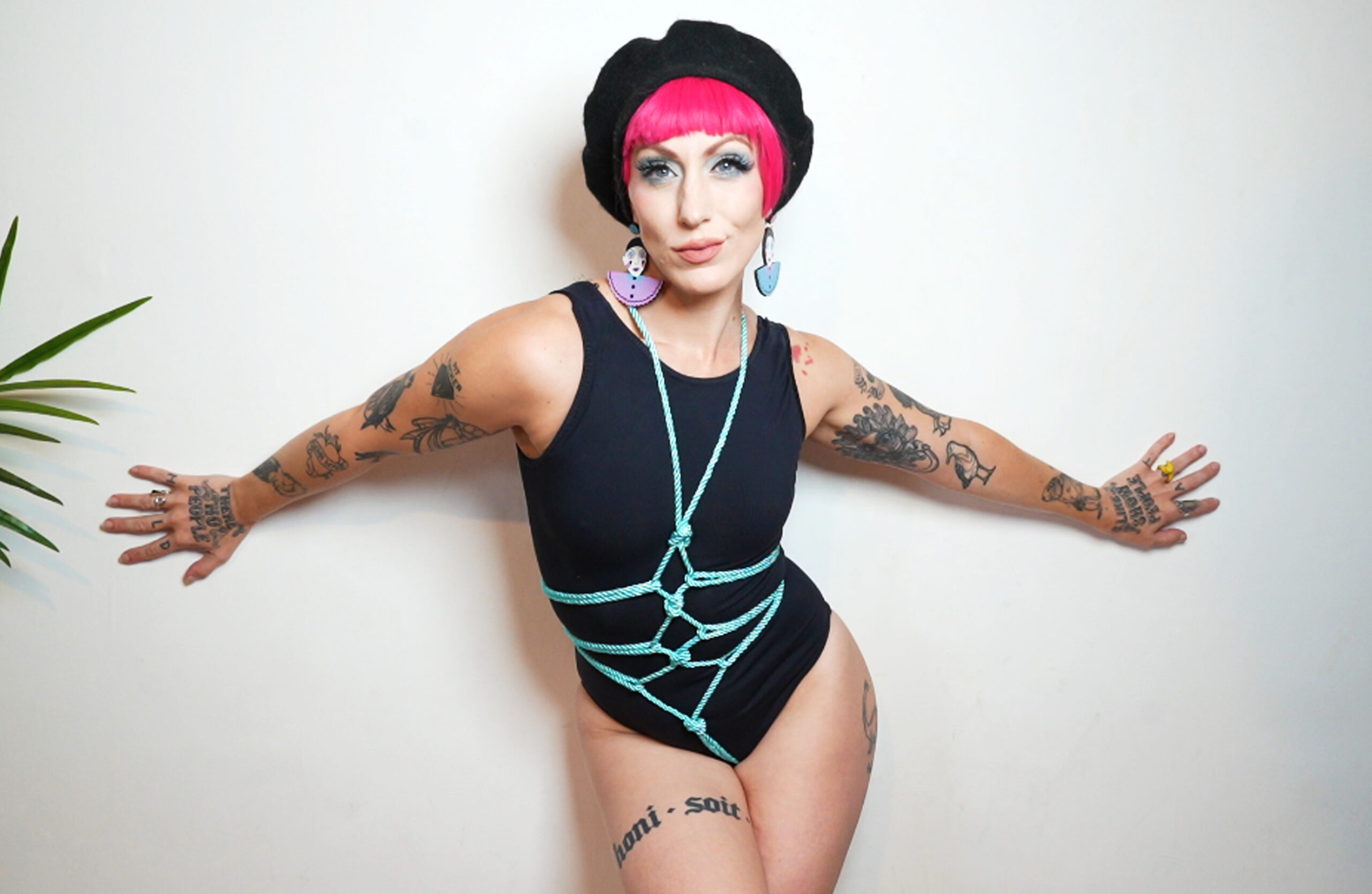What It Means To Have Graysexuality And How To Navigate Sexual Relationships

Understanding Graysexuality
Graysexuality is a spectrum of sexual orientation that exists outside the traditional binary of heterosexual and homosexual. Individuals who identify as graysexual experience varying degrees of sexual attraction, often feeling somewhere between asexual and bisexual. Understanding the nuances of graysexuality can be crucial for individuals navigating their own sexuality and fostering healthy, fulfilling relationships.
Defining Graysexuality
Graysexuality is a spectrum of sexual orientation that exists outside the traditional binary of heterosexual and homosexual. Individuals who identify as graysexual experience varying degrees of sexual attraction, often feeling somewhere between asexual and bisexual.
Understanding graysexuality involves recognizing its fluidity and the diversity of experiences within this identity.
- Some graysexual individuals may experience sexual attraction occasionally or under specific circumstances.
- Others might feel a moderate level of sexual attraction that fluctuates over time.
- Graysexuality is not about a lack of desire but rather a difference in the nature and intensity of sexual attraction compared to other orientations.
Navigating sexual relationships as a graysexual individual can involve open communication, honesty, and self-reflection. It’s important to clearly communicate one’s needs and boundaries with partners, ensuring that everyone feels comfortable and respected.
Finding compatible partners who understand and accept graysexuality is essential for fulfilling relationships.
Spectrum of Sexual Attraction
Graysexuality is a spectrum of sexual orientation that exists outside the traditional binary of heterosexual and homosexual. Individuals who identify as graysexual experience varying degrees of sexual attraction, often feeling somewhere between asexual and bisexual.

Understanding graysexuality involves recognizing its fluidity and the diversity of experiences within this identity.
- Some graysexual individuals may experience sexual attraction occasionally or under specific circumstances.
- Others might feel a moderate level of sexual attraction that fluctuates over time.
- Graysexuality is not about a lack of desire but rather a difference in the nature and intensity of sexual attraction compared to other orientations.
Navigating sexual relationships as a graysexual individual can involve open communication, honesty, and self-reflection. It’s important to clearly communicate one’s needs and boundaries with partners, ensuring that everyone feels comfortable and respected.
Finding compatible partners who understand and accept graysexuality is essential for fulfilling relationships.
Personal Experiences and Expression
Graysexuality is a spectrum of sexual orientation that exists outside the traditional binary of heterosexual and homosexual. Individuals who identify as graysexual experience varying degrees of sexual attraction, often feeling somewhere between asexual and bisexual.
Understanding graysexuality involves recognizing its fluidity and the diversity of experiences within this identity.

- Some graysexual individuals may experience sexual attraction occasionally or under specific circumstances.
- Others might feel a moderate level of sexual attraction that fluctuates over time.
- Graysexuality is not about a lack of desire but rather a difference in the nature and intensity of sexual attraction compared to other orientations.
Navigating sexual relationships as a graysexual individual can involve open communication, honesty, and self-reflection. It’s important to clearly communicate one’s needs and boundaries with partners, ensuring that everyone feels comfortable and respected.
Finding compatible partners who understand and accept graysexuality is essential for fulfilling relationships.

Navigating Relationships as a Graysexual Person
Graysexuality is a spectrum of sexual orientation that exists outside the traditional binary of heterosexual and homosexual. Individuals who identify as graysexual experience varying degrees of sexual attraction, often feeling somewhere between asexual and bisexual. Understanding this fluidity and diversity of experiences within graysexuality is crucial for individuals navigating their own sexuality and forming healthy relationships.
Communication and Honesty
Graysexuality is a spectrum of sexual orientation that exists outside the traditional binary of heterosexual and homosexual. Individuals who identify as graysexual experience varying degrees of sexual attraction, often feeling somewhere between asexual and bisexual. Understanding this fluidity and diversity of experiences within graysexuality is crucial for individuals navigating their own sexuality and forming healthy relationships.
Navigating sexual relationships as a graysexual individual can be a journey of self-discovery and open communication. It’s essential to clearly define one’s own desires, boundaries, and expectations around intimacy.
Honesty with partners about graysexuality is paramount. Explaining the nuances of this orientation and how it might manifest in a relationship can help prevent misunderstandings and foster mutual respect.
Finding partners who are open-minded and accepting of graysexuality is crucial for fulfilling relationships. It’s important to connect with individuals who understand and value the unique experiences within this spectrum of sexual orientation.
Setting Boundaries
Graysexuality is a spectrum of sexual orientation that exists outside the traditional binary of heterosexual and homosexual. Individuals who identify as graysexual experience varying degrees of sexual attraction, often feeling somewhere between asexual and bisexual. Understanding this fluidity and diversity of experiences within graysexuality is crucial for individuals navigating their own sexuality and forming healthy relationships.
Navigating sexual relationships as a graysexual individual can be a journey of self-discovery and open communication. It’s essential to clearly define one’s own desires, boundaries, and expectations around intimacy.
Honesty with partners about graysexuality is paramount. Explaining the nuances of this orientation and how it might manifest in a relationship can help prevent misunderstandings and foster mutual respect.
Finding partners who are open-minded and accepting of graysexuality is crucial for fulfilling relationships. It’s important to connect with individuals who understand and value the unique experiences within this spectrum of sexual orientation.
Respecting Partner’s Needs
Graysexuality is a spectrum of sexual orientation that exists outside the traditional binary of heterosexual and homosexual. Individuals who identify as graysexual experience varying degrees of sexual attraction, often feeling somewhere between asexual and bisexual. Understanding this fluidity and diversity of experiences within graysexuality is crucial for individuals navigating their own sexuality and forming healthy relationships.
Navigating sexual relationships as a graysexual individual can be a journey of self-discovery and open communication. It’s essential to clearly define one’s own desires, boundaries, and expectations around intimacy.
Honesty with partners about graysexuality is paramount. Explaining the nuances of this orientation and how it might manifest in a relationship can help prevent misunderstandings and foster mutual respect.
Finding partners who are open-minded and accepting of graysexuality is crucial for fulfilling relationships. It’s important to connect with individuals who understand and value the standing missionary unique experiences within this spectrum of sexual orientation.
Finding Compatible Partners
Graysexuality is a spectrum of sexual orientation that exists outside the traditional binary of heterosexual and homosexual. Individuals who identify as graysexual experience varying degrees of sexual attraction, often feeling somewhere between asexual and bisexual.
Understanding graysexuality involves recognizing its fluidity and the diversity of experiences within this identity. Some graysexual individuals may experience sexual attraction occasionally or under specific circumstances. Others might feel a moderate level of sexual attraction that fluctuates over time. Graysexuality is not about a lack of desire but rather a difference in the nature and intensity of sexual attraction compared to other orientations.
Navigating sexual relationships as a graysexual individual can be a journey of self-discovery and open communication. It’s essential to clearly define one’s own desires, boundaries, and expectations around intimacy. Honesty with partners about graysexuality is paramount. Explaining the nuances of this orientation and how it might manifest in a relationship can help prevent misunderstandings and foster mutual respect.
Finding partners who are open-minded and accepting of graysexuality is crucial for fulfilling relationships. It’s important to connect with individuals who understand and value the unique experiences within this spectrum of sexual orientation.
Challenges and Considerations
Exploring graysexuality involves understanding its complexities and navigating the challenges it presents in romantic relationships. This spectrum of sexual orientation, situated between asexuality and bisexuality, requires open communication, self-reflection, and a willingness to redefine conventional norms surrounding intimacy.
Social Stigma and Misunderstandings
One significant challenge for graysexual individuals is societal stigma and misunderstanding surrounding their identity. Graysexuality often falls outside the accepted binary of heterosexual and homosexual, leading to confusion and prejudice from those who lack understanding.
Misconceptions can arise about whether graysexual people are truly interested in intimacy or simply suppressing their desires. This can lead to pressure to conform to societal expectations or to feel ashamed of their experiences.
Finding partners who understand and accept graysexuality can be another hurdle. The lack of widespread awareness about this orientation can make it difficult to connect with compatible individuals who are open-minded and willing to navigate intimacy in a way that respects the graysexual person’s needs and desires.
Internalized Pressure
Navigating relationships as a graysexual individual can present unique challenges. Internalized pressure from societal expectations and misconceptions surrounding graysexuality can significantly impact an individual’s self-perception and confidence.
The pressure to conform to the traditional binary of sexual orientation can lead to feelings of inadequacy or guilt for not fitting into those predefined categories. Graysexual individuals may struggle with internalized homophobia or biphobia, even if they personally do not identify as homophobic or biphobic.
Additionally, the fear of rejection or being misunderstood by potential partners can create anxiety and hesitation in pursuing relationships.
Managing Expectations in Relationships
Managing expectations in relationships involving graysexuality requires open and honest communication, empathy, and a willingness to learn from each other.
- It’s important for graysexual individuals to clearly communicate their needs and boundaries with partners, explaining the nuances of their sexual orientation and how it might manifest in their relationships.
- Partners should be receptive to learning about graysexuality and understanding that it doesn’t necessarily mean a lack of desire or interest in intimacy. It simply represents a different experience and expression of sexuality.
- Both partners need to be willing to compromise and negotiate what intimacy looks like within their relationship, finding ways to meet each other’s needs while respecting the graysexual person’s comfort levels and preferences.
Setting realistic expectations about the frequency and nature of sexual activity is crucial. It’s important to remember that every relationship is unique, and what works for one couple may not work for another.
Resources and Support
Navigating relationships as a graysexual individual can present unique challenges due to societal stigma and a lack of understanding surrounding this identity. It requires open communication, self-reflection, and a willingness to redefine conventional norms regarding intimacy.
Online Communities and Forums
Finding support and connection within the graysexual community can be incredibly beneficial for navigating these challenges. Online communities and forums provide safe spaces for individuals to share their experiences, ask questions, and find understanding. These platforms allow graysexual people to connect with others who understand their unique experiences, fostering a sense of belonging and reducing feelings of isolation.
Many online resources are dedicated to providing information about graysexuality, offering support, and connecting individuals with like-minded peers. Some popular online communities include:
- AVEN (The Asexual Visibility and Education Network): While primarily focused on asexuality, AVEN has a section dedicated to graysexuality and welcomes individuals who identify with this spectrum.
- Kinkly: While Kinkly focuses on diverse sexualities and kinks, it also has a welcoming community for graysexual individuals who explore their sexuality in various ways.
- Reddit:** Subreddits such as r/Graysexuality or r/asexuality offer platforms for discussion, support, and sharing experiences related to graysexuality.
Connecting with others through these online communities can provide invaluable support, reduce feelings of loneliness, and empower graysexual individuals to embrace their identity confidently.
Therapists and Counselors Specializing in Sexual Identity
For individuals questioning their sexual orientation or seeking support regarding graysexuality, connecting with therapists and counselors specializing in sexual identity is crucial. These professionals possess the expertise to provide a safe and non-judgmental space for exploration and understanding.
When searching for a therapist, it’s essential to find someone who specializes in working with individuals who identify as asexual, graysexual, or have diverse sexual orientations. They should be knowledgeable about the nuances of these identities and able to provide culturally competent care that respects individual experiences.
Organizations like The Trevor Project, GLAAD, and PFLAG offer resources and support for LGBTQ+ individuals, including those who identify as graysexual. These organizations can connect individuals with therapists and counselors specializing in sexual identity and provide valuable information about navigating relationships and social challenges.
MS Style and Grace
OMG Nail Strips
- Will My Boyfriend Notice If I Get Lip Fillers? - June 24, 2025
- What Is The Cost Of Dimpled Chin Treatment In The UK - June 20, 2025
- What Are The Most Popular Lip Filler Brands In The UK? - June 19, 2025
